Selcouth Chronicles Week 10
Hello family and friends! Welcome to week 10 of the Selcouth Chronicles.
Week 10: March 10 - March 16
🛫March 11 Siem Reap -> 🛬Ho Chi Minh City
🛫March 14 Ho Chi Minh City ->🛬 Da Nang 🚗-> Hoi An
🚗March 16 Hoi An -> Hue
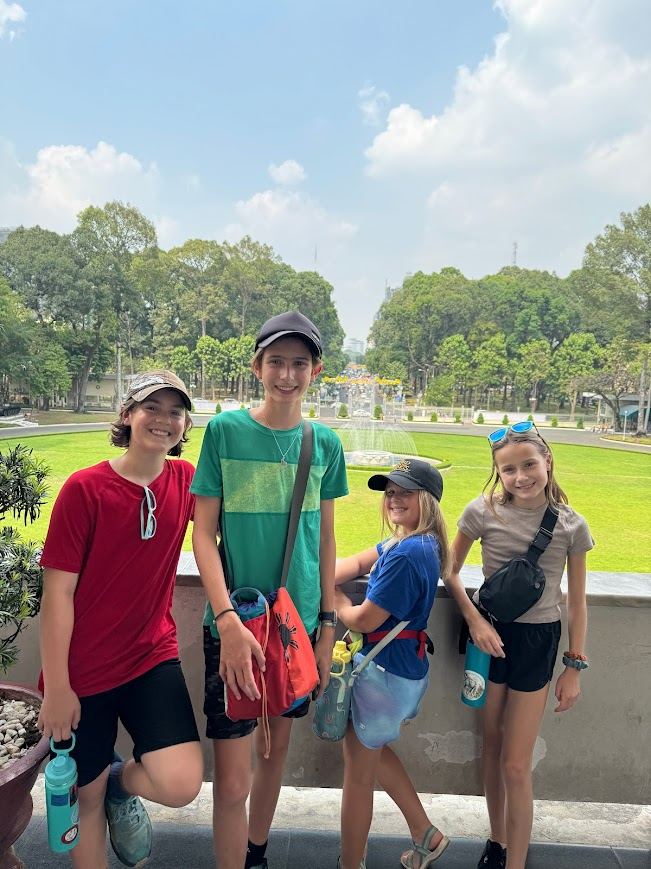
CAMBODIA AND VIETNAM
Highlights: Apopo rats, exploring HCMC, War Remnants Museum, Independence Palace, delicious Vietnamese food, Old Town Hoi An, My Son Sanctuary, Hue Citadel
Lowlight: Saying goodbye to Sean when he split off for a work trip
James:
(I can’t believe that we’ve just reached DOUBLE DIGITS in Selcouth Chronicles! Whooooooooo!)
Sunday was a hot day so we took it slow in the morning with the incredibly awesome activity of trip planning. Mom and Dad did most of that, as I was comatose from heat and being so busy the previous days. I finally woke myself up by swimming with Sabian and Aurelia, and all the adults joined in later. Since swimming makes you hungry, we went out for lunch at a restaurant called New Hope with an inspiring backstory. New Hope is a charity that supports children in Cambodia, and right now is focusing on education. The restaurant raises money for the cause and allows volunteers to get experience in service work.
After the wonderful lunch, we saw some rats. The rats in question were called HeroRATs, and they work as part of a company called Apopo to detect unexploded landmines and munitions before they injure innocent people. Here is everything that was cleared in 2023:
Area Covered = 13,701,482 m².
Anti-Personnel = 506
ERW (Explosive Remnants of War): 390
Cluster Munitions: 60
Anti-Tank: 1
We even got to see a demonstration of a rat detecting buried TNT, and were even able to hold the rat🐀!
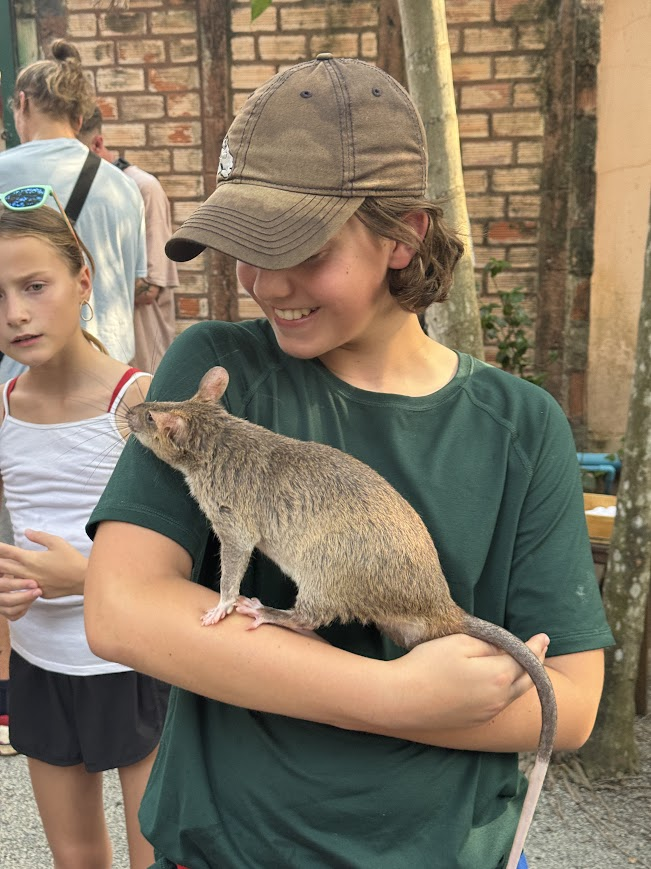
Monday we flew to Ho Chi Minh City and had lunch there. The more exciting part of the day was when we got to walk to a bunch of different temples. It was a lot of red and gold! That activity took up most of the day, and what came next was dinner (banh mi and cake) and bed.
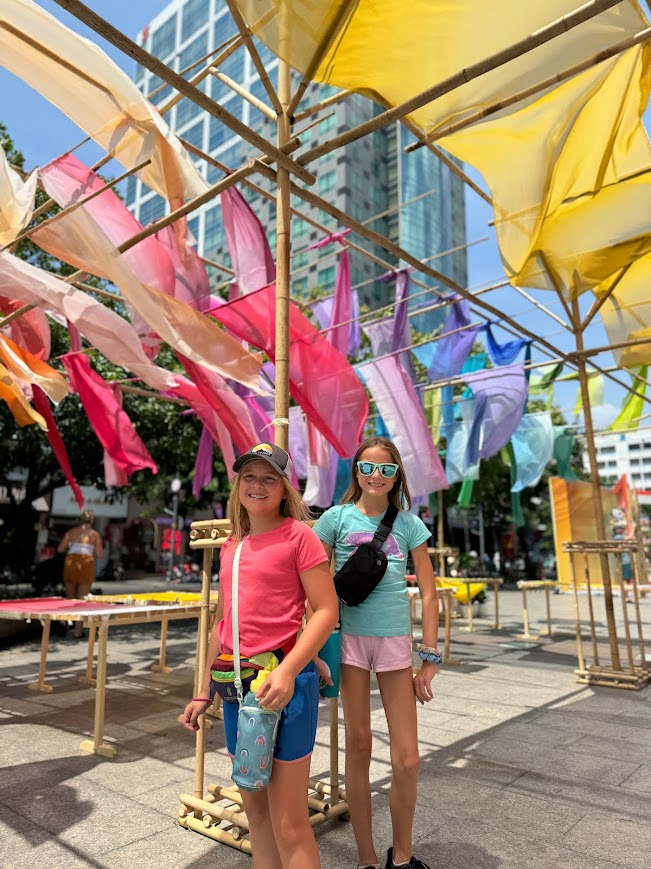
Tuesday started with OK croissants and a nice pedestrian area. We also saw an opera house - not as good as the Sydney Opera House, haha, but still cool. Then came a post office that was more like a market to me, and a book street afterwards. The book street was a street filled with only stalls that sell books. It was like heaven on earth for me, even if most of the books were written in Vietnamese.
Those places are all great, but my favorite part of that day by far was the War Remnants Museum. It was made to teach people about the horrors of the Vietnam War. The exhibits are full of old pictures, memorials, and artifacts. The artifacts ranged from MI6 assault rifles to Huey helicopters. The experience shakes you but is really engrossing. We ended the day on that.
Wednesday started with a slow morning for Abby and me. After Mom dragged us out of bed, we wandered for a while and then got lunch bowls so we had energy for later. “Later” included a stop at a very fancy coffee shop where Dad and Chris each tried a cup. Next we all went to Independence Palace, which was an enticing blend of modern architecture and traditional Asian buildings. It even had an emergency bunker! After the palace, we walked to get dinner at a place that fried its chicken in a waterfall of oil. Dinner was fried chicken, banh mi, and gelato.
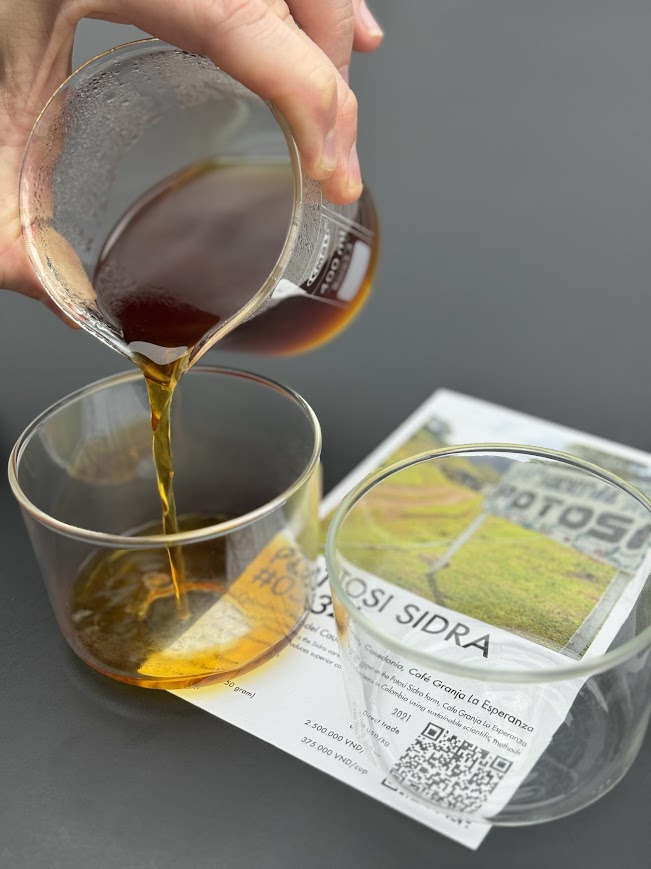
Thursday we said goodbye to Dad at the airport because he had to fly to Beijing for work. Mom, Abby and I flew to Da Nang with the Pauls. When we landed, we all got in a car and drove to Hoi An, where we had a nice lunch. After lunch we began exploring the Old Town. It contained another market, but also a smattering of museums. We got delicious Alluvia chocolate and ordered some pants from a local tailor for Mom. Then we got into town history with the Merchant House, a small museum that documented what happened during some of Vietnam’s most famous floods. It even had markers to show how high the floodwater rose. Once we were done with that, we went to watch a cultural dance and had lunch. Then came more wandering, picking up bananas and mangos for breakfast the next day, and bed.
Friday was very walking-centered with a tour to the My Son Sanctuary. My Son is an ancient temple complex that was severely damaged by bombings in the Vietnam War, meaning that it was more like an ancient ruined city. Afterwards our group learned how to make rice paper and had a yummy family-style Vietnamese lunch. We then had a short boat tour and ended the day with a nice dinner.
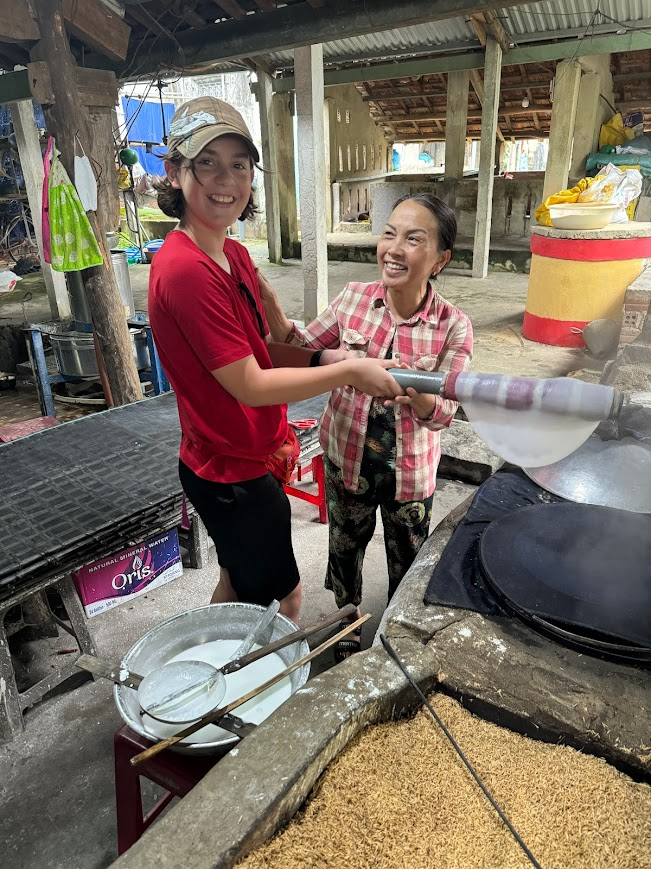
The final day of the week, Saturday, had a very bumpy start. That is not a metaphor - in the morning we got on a three-hour bus ride to Hue (that I slept through most of.) The remainder of the day was spent wandering around the Citadel, a massive complex that housed many emperors and contained an entire Forbidden City. It was a lot of brick and stone! What a way to cap off Week 10, right?!
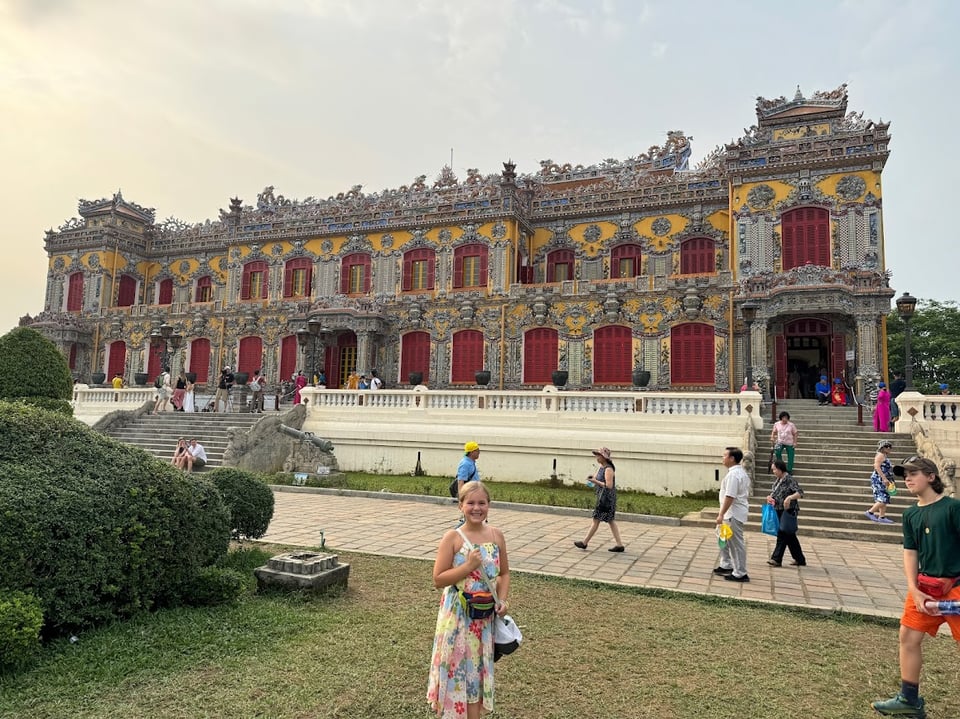
Abby:
This week, we are excited to continue our travels with our friends Aurelia (10), Sabian (12), Aviva, and Chris. On Sunday, we all got the opportunity to visit the Apopo HeroRATs center. African giant pouched rats were given the nickname “HeroRATs” after being trained to sniff out landmines in Africa. Apopo eventually spread to places like Cambodia, where there are still unexploded landmines from the Vietnam War and the Khmer Rouge.
But why did they pick these rats for the job? Since these rats’ weight never exceed 1.5kg they are not heavy enough to set off a landmine during searches. They are also very smart and have an incredible sense of smell. They can smell one trillionth of a gram of TNT! Wow! These rats are also faster and more efficient at detecting landmines than any man-made technology at the moment. Metal detectors pick up anything metal, like leftover scraps, where these little guys only pick up explosives. A human using a metal detector to search for landmines can take up to four days to clear an area the size of a tennis court, but an Apopo rat can cover the same area in 30 minutes.
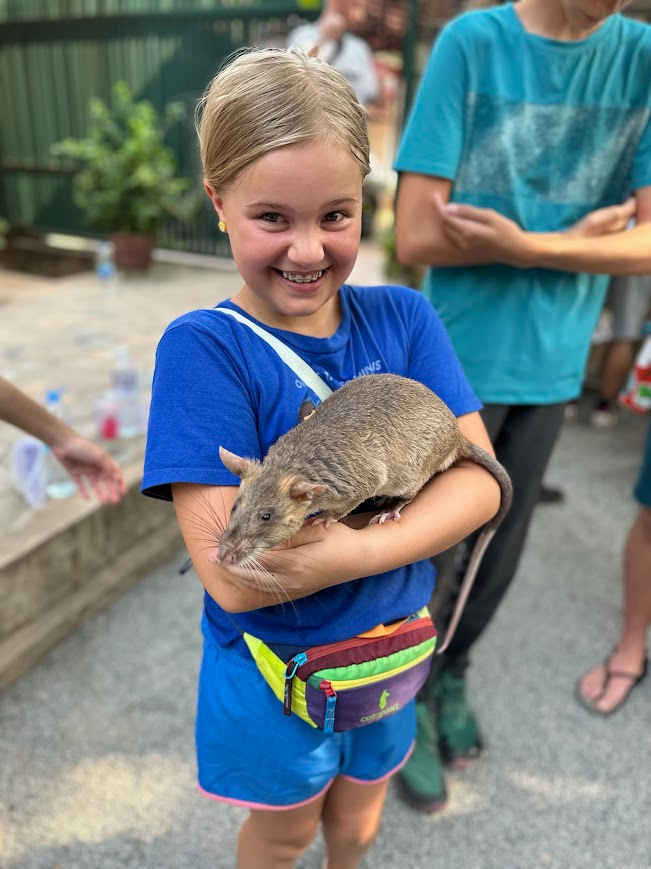
These rats are trained with a few simple steps. When rats are 4-5 weeks old, they are socialized to get comfortable with their work environment and handlers. Next, the young rats learn a basic clicker training process that teaches them that when they hear a clicker it means food. Later, the rats are trained to find the scent of TNT to trigger a click and get food.
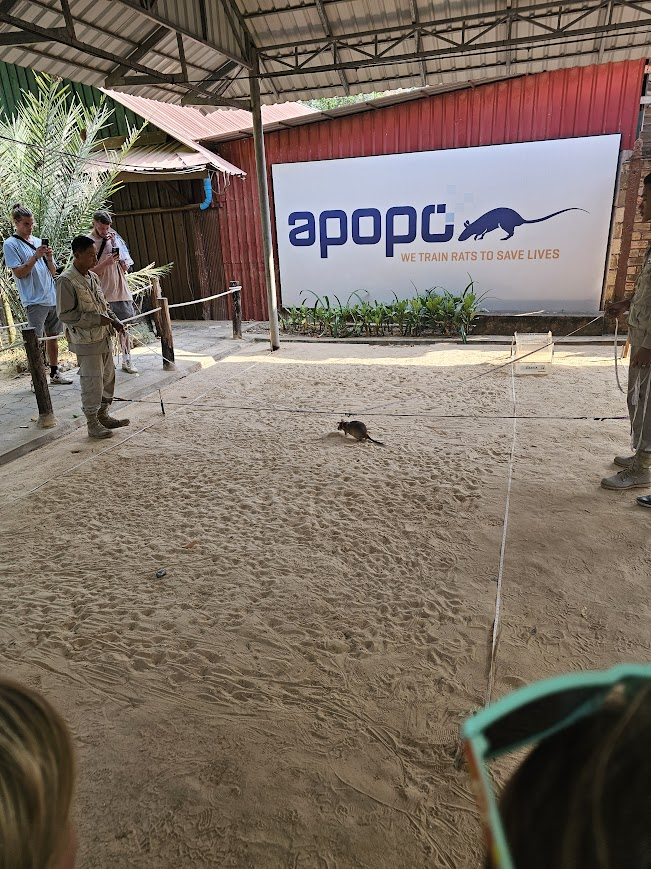
We actually got to see a live demonstration of how the rats work. When they are out on the field, they get fastened with an (ADORABLE) mini harness. This gets attached to a rope that two Apopo workers hold on either side. There are boxed-off zones where Apopo thinks there are landmines. The rats walk in lines up and down the zones and sniff out the mines. When they find one, they scratch at the ground to signal to their trainers. When a landmine is found, Apopo then calls in experts to destroy it before anyone can set them off. These little rats are doing so much for the people in the places where they work.
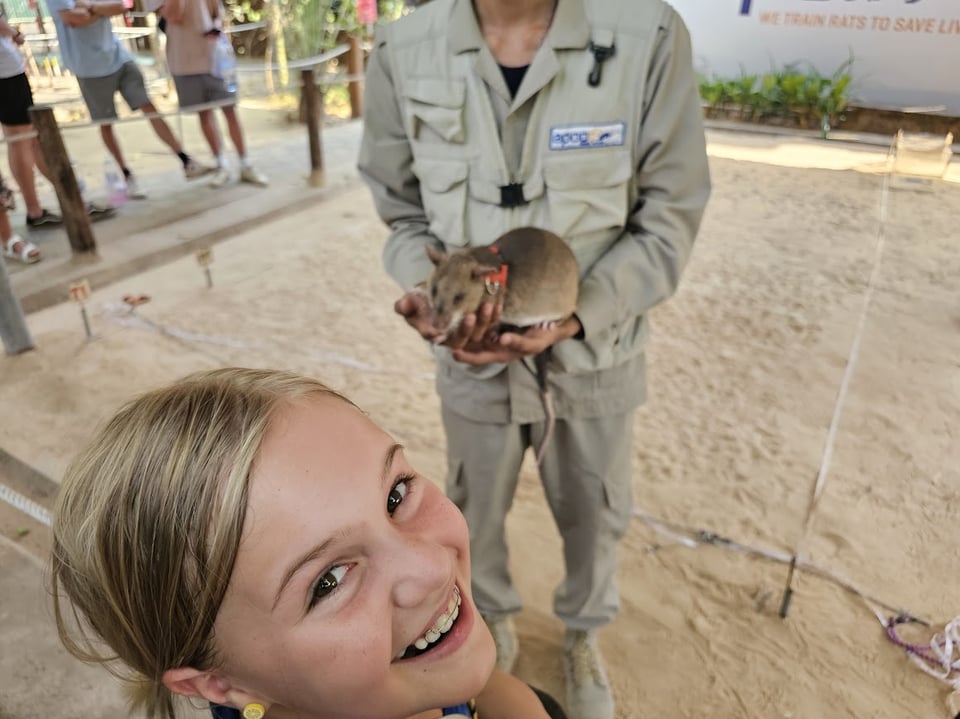
These amazing rats don’t only sniff out mines. Some rats are also being trained to smell tuberculosis, find missing people in natural disasters, and detect wildlife smugglers. People are even experimenting to see if they can be trained to detect cancer. I think it’s so cool that such small animals can do such big, important things. These rats are adorable AND awesome! We loved the Apopo visitor center and holding the friendly rats. In fact, we loved it so much that we adopted a rat for my classroom!
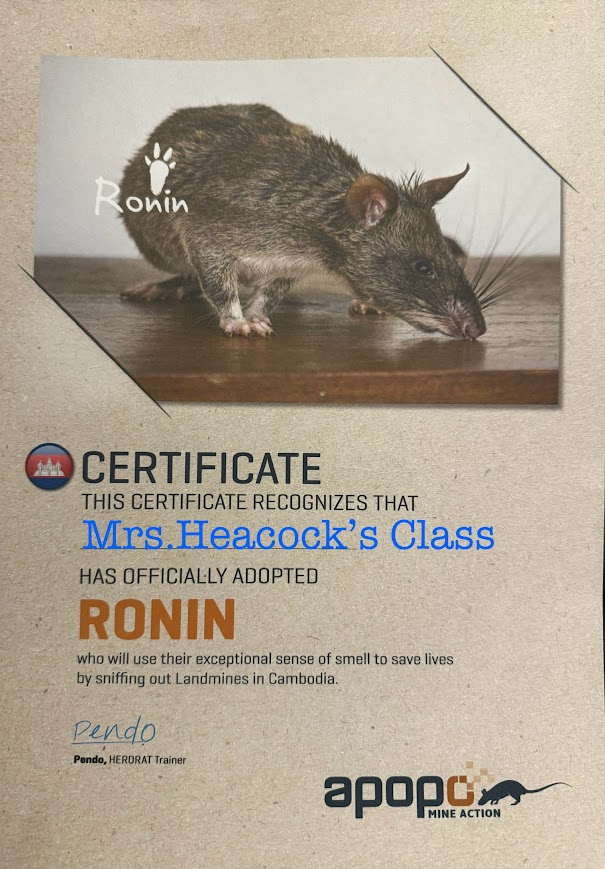
Sean:
The magic and opportunity of this trip cannot be understated. Having the opportunity to witness so much of the world; its people, history, and culture is having a huge impact, and is opening my eyes. The necessary impediment to this is having to continue working, and the impact this week is even larger, as I had to detour to Beijing to visit our office there. Before I left, I was able to visit the War Remnants Museum in Ho Chi Minh City, and it truly had an impact.
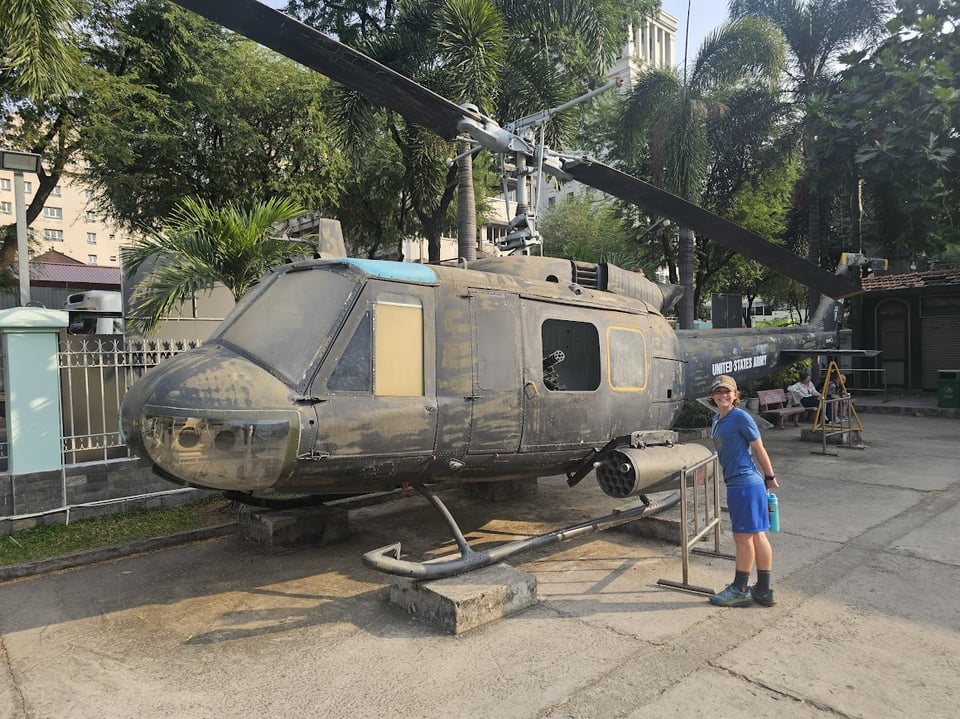
As James mentions, you immediately know what you’re in for as you walk into the courtyard, strewn with artifacts of the war. Tanks, airplanes, helicopters, artillery, and unexploded ordnance. At the back of the courtyard is a fairly nondescript building that houses the exhibits. The structure expects you to go all the way up and work your way back down, across the two floors.
The first exhibit, dubbed “Historical Truths,” lays out through pictures and placards the long history of the Indochina and Vietnam wars, spanning almost 30 years from 1946, when Vietnam began to separate from it’s colonizer, France, through the end of U.S. involvement in the Vietnam war in 1975. Told with a very obvious bias from the Vietnam perspective, it nonetheless was informative, as I had not realized how complicated this area of the world had become immediately after the second World War. This relatively tame room did not prepare me for the rest of the museum. The next room housed multiple exhibits: Requiem, War and Peace, and Agent Orange During the Vietnam War. Requiem was a collection of photographs from war correspondents collected after war. These were donated from journalists from all over the world, and showed the first-hand accounts of the war. Most were the distilled visions that many of us were used to, but a few suddenly would show the horrors of war, such as severely mutilated bodies. Continuing along, there were two to three such pictures amongst the visual story told here. The final turn in the room brought you to the Agent Orange section, which detailed what it was. I didn’t realize that Agent Orange was actually a defoliant, meant to destroy the jungles of Vietnam to remove the hiding places of the Viet-cong. An incredibly short-sighted military plan that has had well-known long term effects on the Vietnamese people and U.S. veterans. I have to admit that I was shaken looking at the devastated landscapes and the health impacts still being seen today.
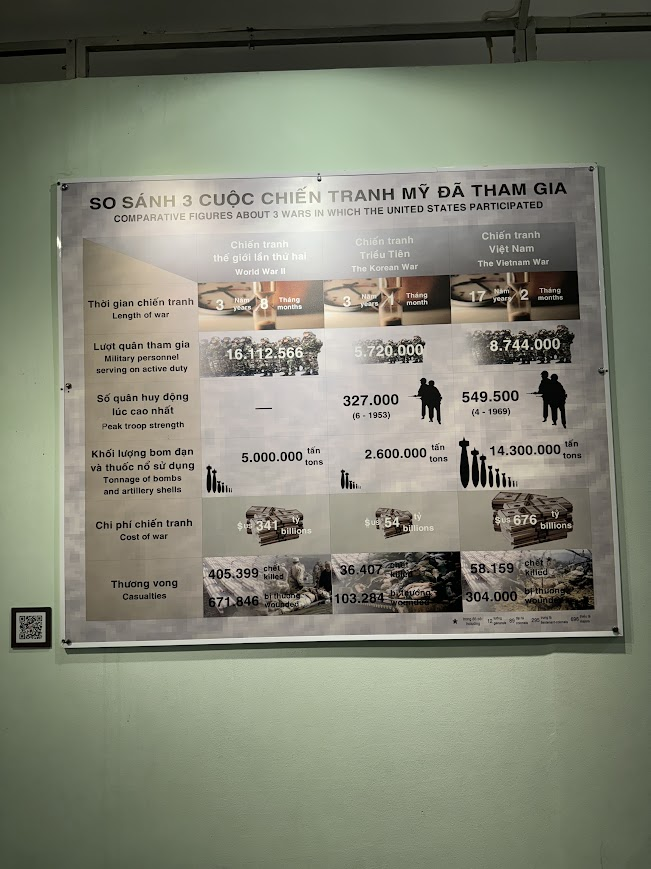
Moving down one floor, the next exhibit is dedicated to war crimes. Again, the tilt in the narrative is obvious, but the truth in the pictures and story are hard to witness. This room was no-holds-barred, and showed some of the worst moments of the war. This included the massacre at My Lai, where U.S. GIs murdered an entire town in an effort to clear any possible enemies. This included children, and these pictures were particularly hard to look at, with my own children in the building. James went through the entire exhibit, but we warned Abby and she rightfully bypassed this floor. The exhibit ended with a display of the various weapons used during the war, which was a welcome respite from the images of the damage these weapons can have on people. The final exhibit in the building was the lasting consequences of Agent Orange. Seeing the various genetic impacts that have been seen in subsequent generations is a searing message of how lasting the effects of war can be.
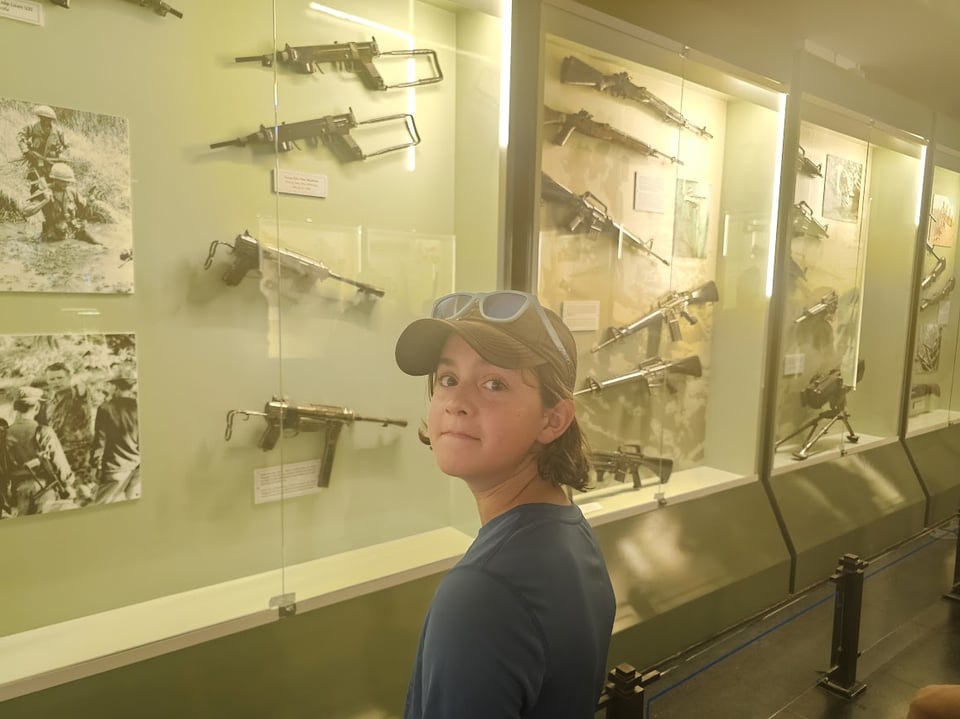
Caitlin:
We almost didn’t come to Hoi An. It’s hard to pack in everything you want to see in a country without making the pacing feel rushed. Ultimately (and largely thanks to Aviva’s desire to see the My Son ruins) we decided to keep this spot on our itinerary, and I’m so glad we did because it was my favorite place this week!
Hoi An was literally and figuratively a breath of fresh air after Ho Chi Minh City. The city is an important part of Vietnam’s history and shouldn’t be missed, but it’s loud and hectic, and the heat was stifling. Hoi An, by contrast, is near the ocean and enjoys cool breezes. It was still hot and humid enough for us to be dripping sweat most of the time, but having the wind blowing past made being outside much more manageable. The streets in the Old Town are strung with lanterns and it's very walkable without a car, so we spent several pleasant hours strolling and admiring the area.
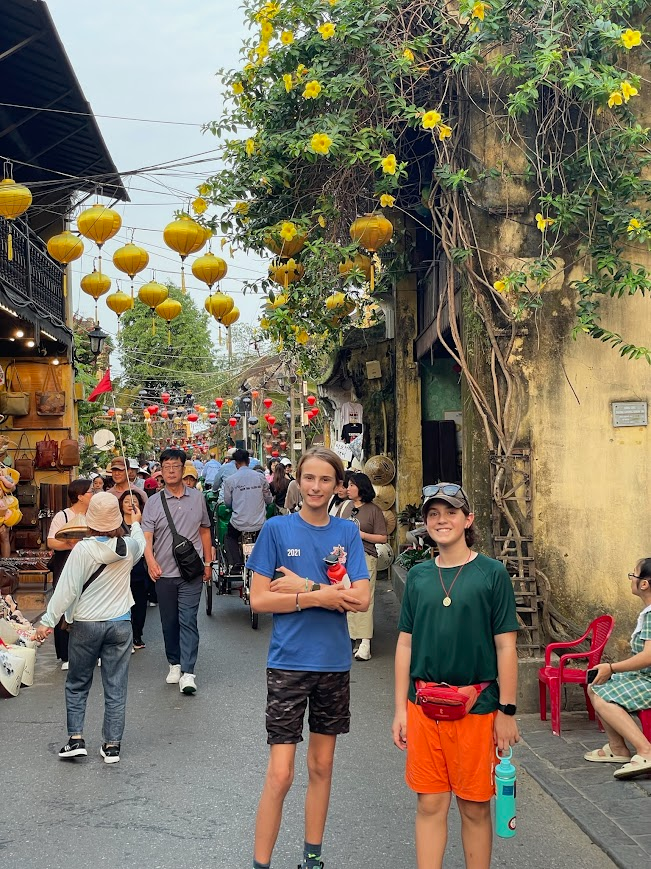
Hoi An is now unmistakably a tourist town, packed with dozens of tailors, leather goods stores, restaurants, or souvenir shops, but the historic spirit remains. Old Town (Ancient Town) was designated a World Heritage Site thanks to its importance as a trading port from the 15th-19th centuries and the retention of its original character. The street layout is still the same as it was during its heyday, and thanks to some economic declines in the 19th century there wasn’t any pressure to tear down older buildings and make way for new ones. Timber frame buildings from centuries ago are still standing, thanks to conservation and restoration efforts. You have to purchase a 5-pack of tickets to enter many of the historic buildings, and it was hard to narrow down our choices! We tried to pick carefully to enjoy a variety of old homes, museums, religious sites, and arts.
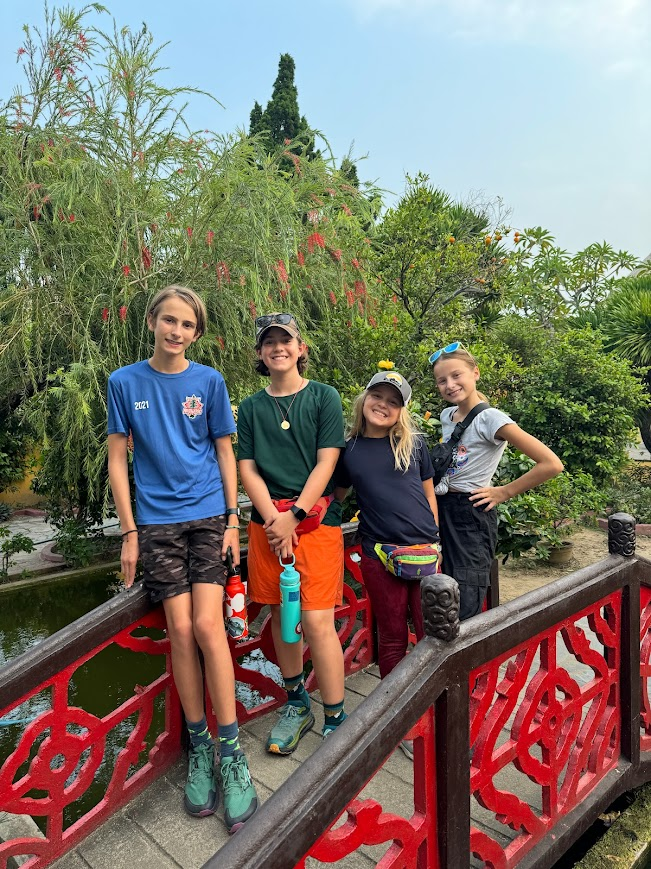
I also indulged in one of the town’s signature industries: custom tailoring. On this trip we are frequently outdoors in the heat visiting sites that require dressing modestly, so it’s helpful to have long but lightweight pants. I’ve been putting off purchasing any new clothing for several countries so that I could find something in Vietnam, and having something custom-made for me was a fun experience! The tailor shops in Hoi An can make what you need in 24 hours, so I was able to describe my ideal pants, pick out fabrics, try on the final product and get minor alterations in the day and a half we had in town. Amazing!
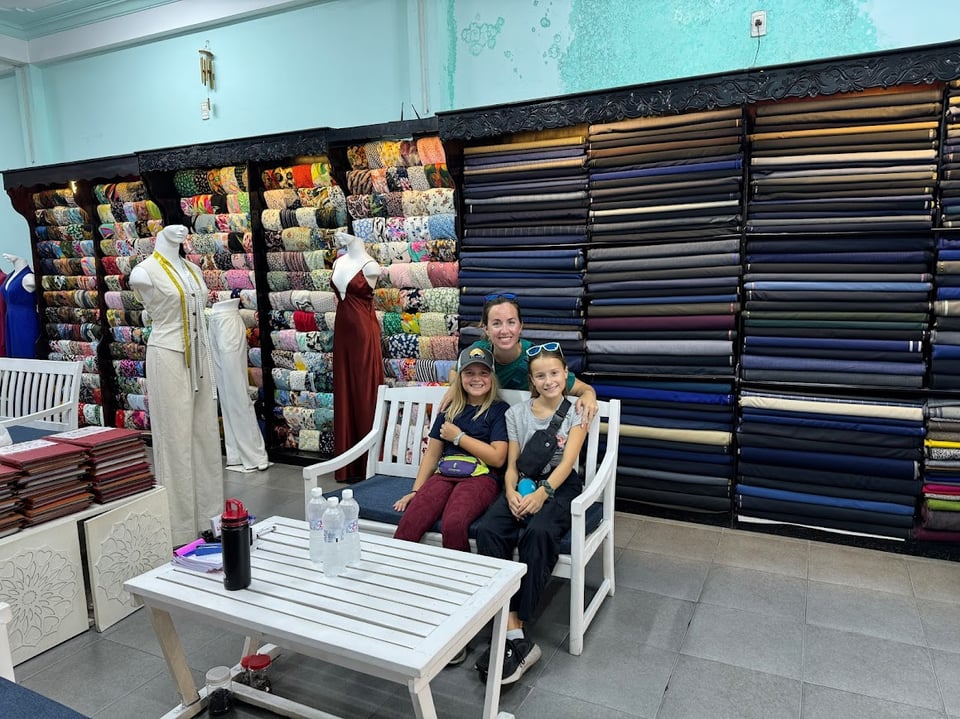
Our single full day in the area was spent exploring the My Son Sanctuary outside of town, in a deep valley surrounded by towering mountains. The sanctuary is an area of Hindu temples built by the Cham people. The Cham are the original indigenous inhabitants of the area from before the Vietnamese expansion southward and they remain an ethnic minority in contemporary Vietnam. My Son was an important ceremonial, spiritual, and burial site for the kings of Champa between the 4th-14th centuries.
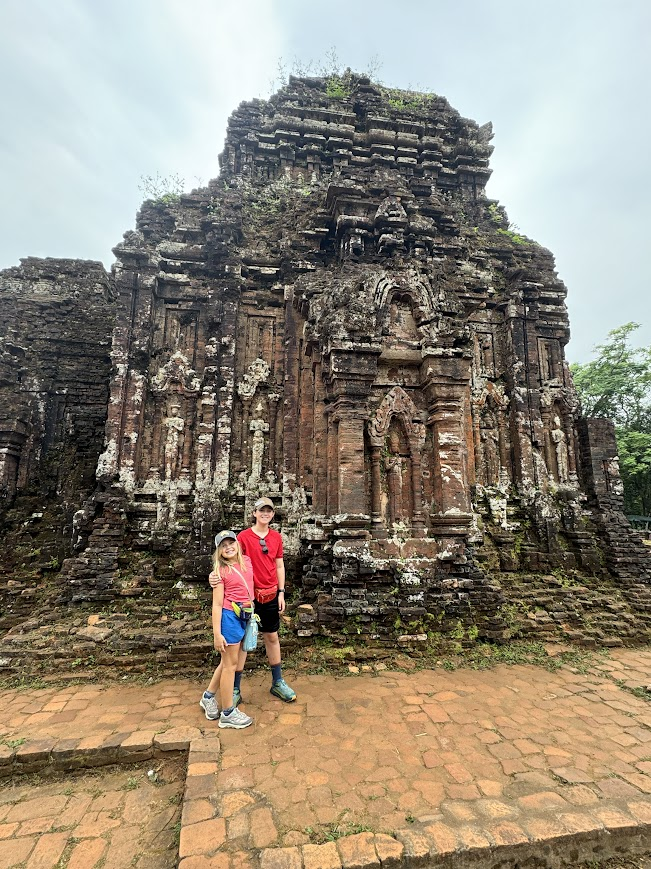
The structures are in various states of disrepair as a result of long periods of abandonment, flooding, heat, and humidity. What remained by the 1900s were heavily bombed, first by France but primarily in a single week by the US during the Vietnam War, when the sanctuary was used as a Viet Cong stronghold. Of the 70 original structures in the complex, only around 20 remain. Between the ruins and the ever-present mist, it was an eerie and atmospheric morning.
See you next week!
Sean, Caitlin, James, and Abby
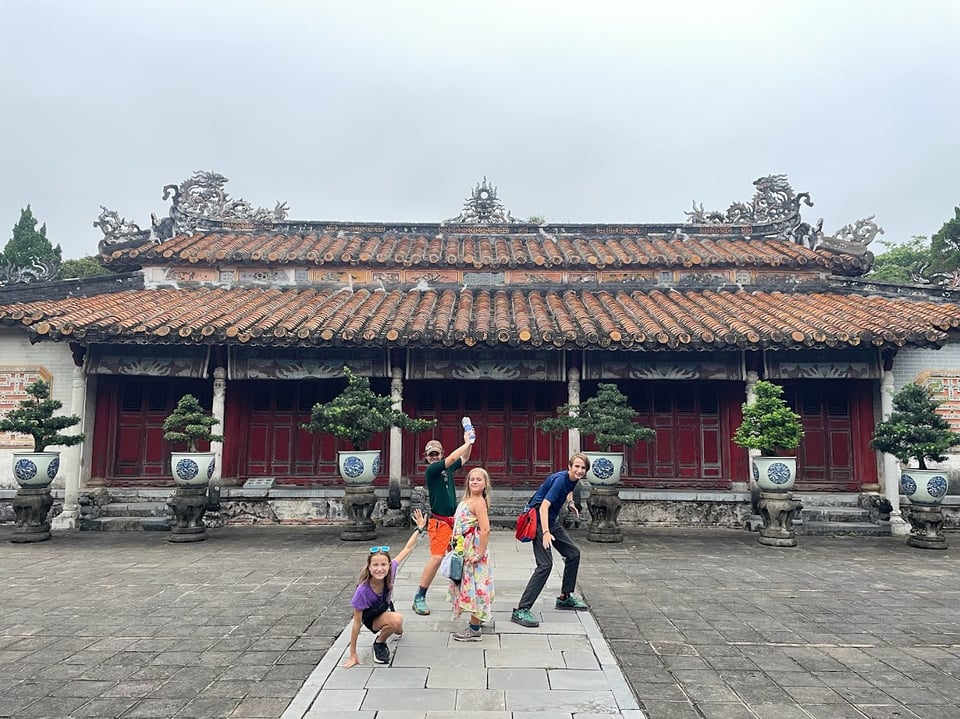
Catching up? Read week 1, 2, 3, 4, 5, 6, 7, 8, or 9.
p.s. The Pauls have a newsletter too! You can read this week's installment here soon.